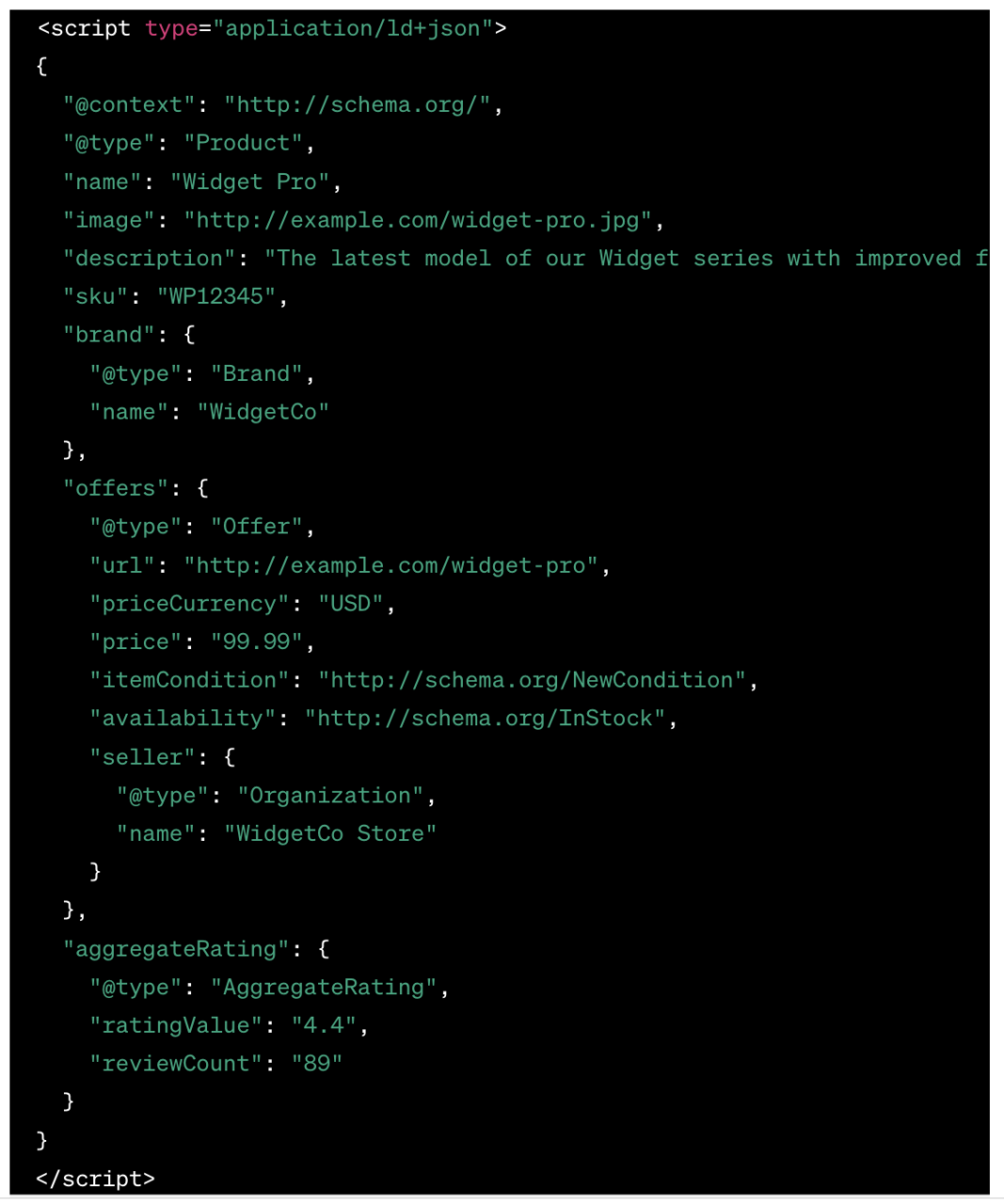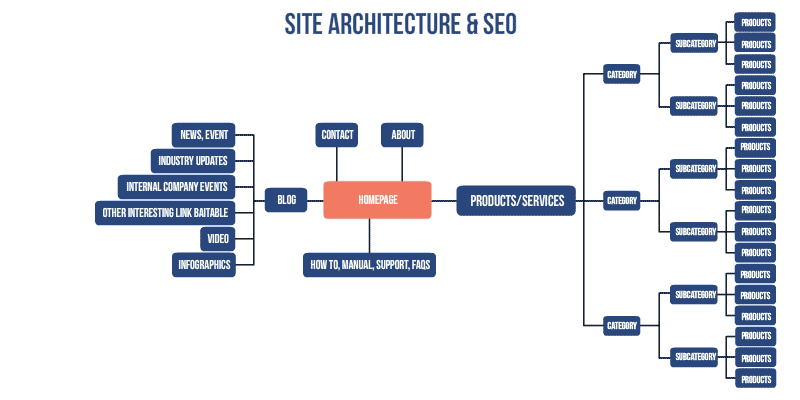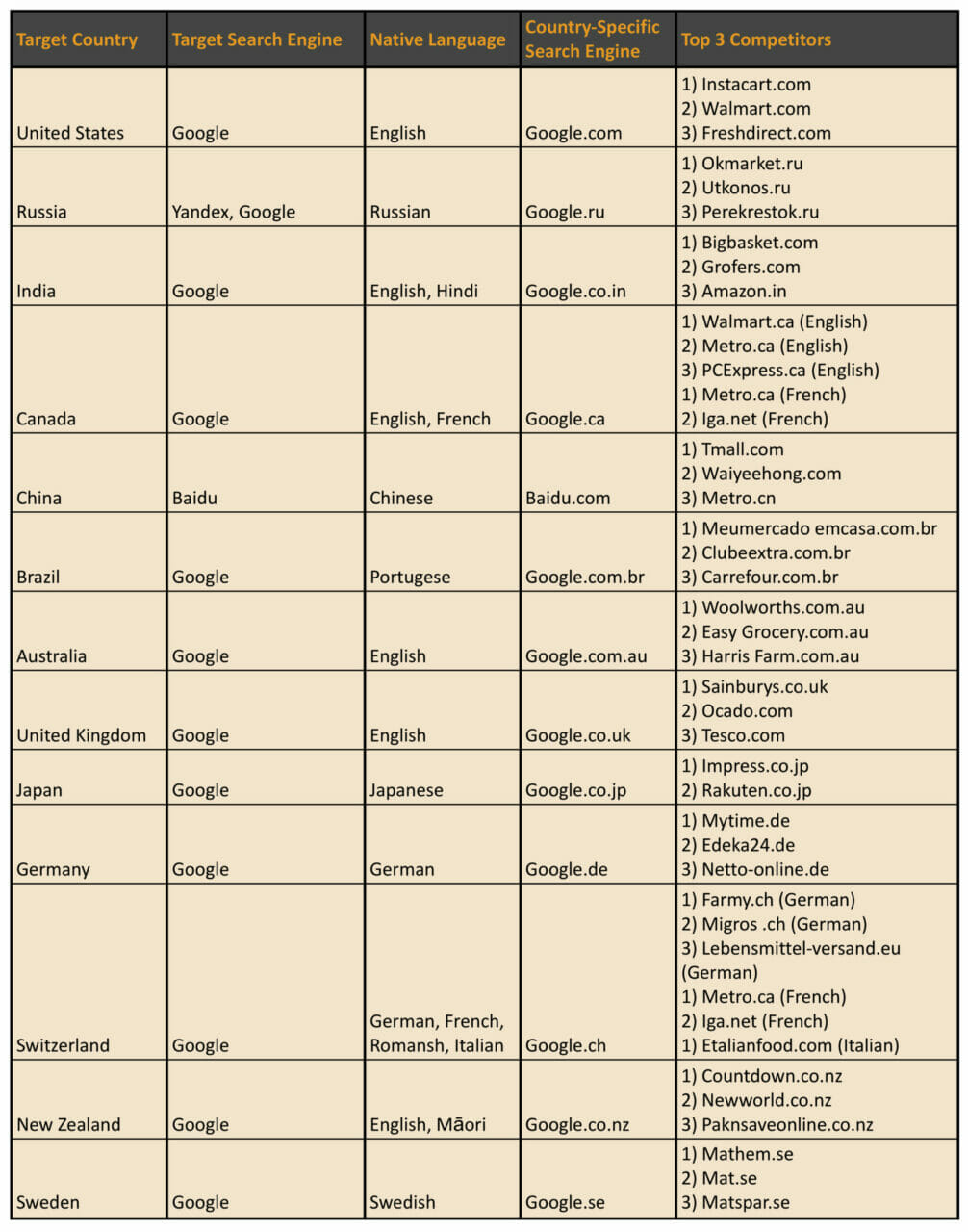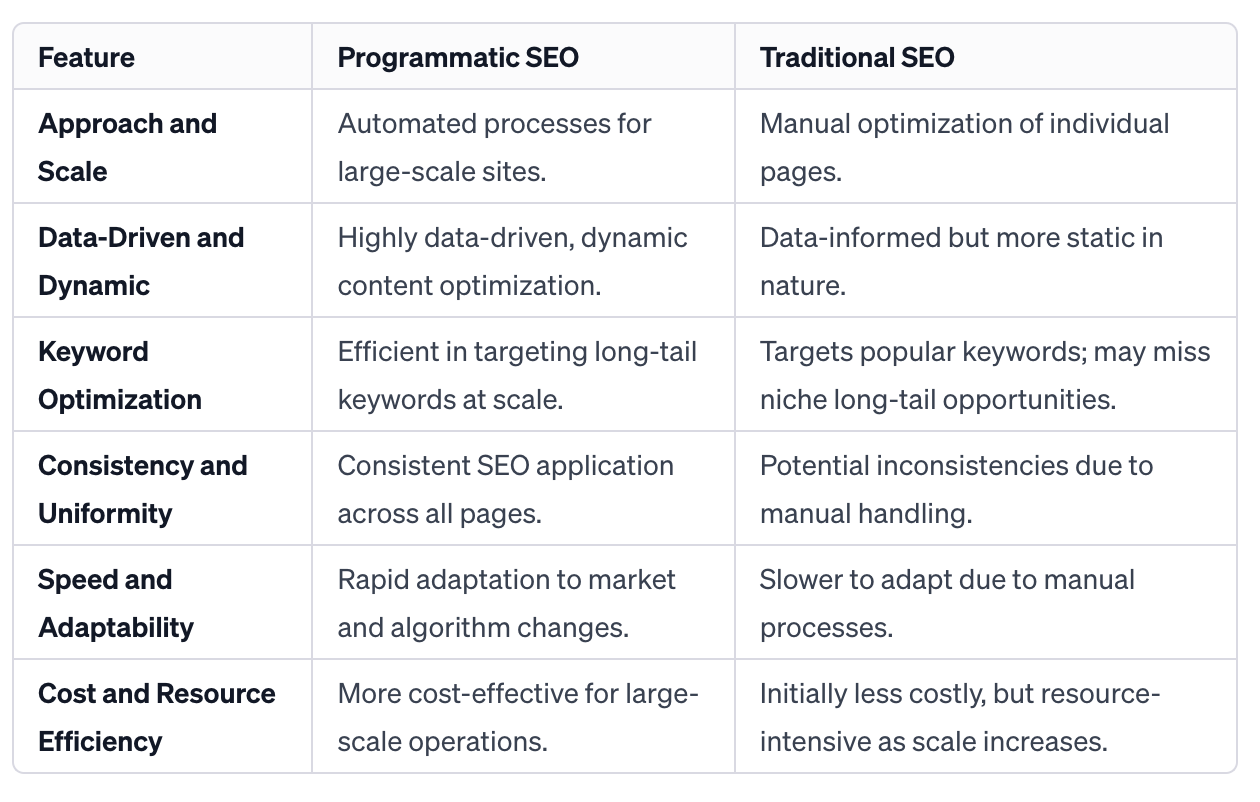Programmatic SEO for ecommerce is a powerful technique that blends the technical aspects of search engine optimization with automated, scalable methods particularly suited for online stores and e-tailers.
An effective programmatic SEO strategy for ecommerce is useful for large-scale online retailers with thousands of product listings. By automating and scaling SEO efforts, these businesses can ensure that each product page is fully optimized, leading to increased visibility, traffic and potentially higher sales.
Let’s understand why programmatic search engine optimization for ecommerce is so effective and what tactics are used in this strategy to drive massive organic traffic to online stores.
How Programmatic SEO Benefits Ecommerce Businesses
As an ecommerce business owner, implementing pSEO can significantly enhance your online visibility and the user experience. This approach makes it super easy to efficiently scale your SEO efforts across your extensive product range, so that you can be sure that each item is optimally positioned in in the SERPs through automated, data-driven strategies.
Ultimately, this leads to increased targeted traffic, better search rankings and a competitive edge in your market. Here are some more specific ways that programmatic SEO benefits online retailers:
- Automates Bulk Optimization: With numerous products, manually optimizing each page is impractical. Programmatic SEO automates this task, updating thousands of product descriptions and titles based on set rules and keywords.
- Tailors to User Search Trends: It quickly adjusts product pages to align with current search and digital marketing trends. If a particular product becomes trendy, pSEO can help the relevant pages rank higher by updating key SEO elements.
- Handles Seasonal Fluctuations: Ecommerce businesses often deal with seasonal products. Programmatic SEO can adjust pages to be more visible during peak seasons and less during off-peak times.
- Improves Long-Tail Keyword Ranking: Ecommerce sites can benefit from ranking for specific, long-tail keywords relevant to their niche products, and pSEO can optimize pages for these detailed searches.
- Enhances Site Structure for Better Crawling: It ensures that product pages are structured so that search engines can easily crawl and index them, which is crucial for large retail sites with deep product catalogs.
- Dynamic Content Updates: For ecommerce sites with frequently changing inventories, programmatic SEO can dynamically update content to reflect current stock, prices, and product features.
- Localizes SEO Efforts: If an ecommerce business operates in multiple regions, pSEO lets businesses tailor product pages to rank well in local searches in different areas.
- Reduces Human Error: Automating SEO tasks reduces the risk of human error in repetitive tasks like meta tag creation, which ensures consistency across thousands of pages.
Key Components of Programmatic SEO for Ecommerce
Programmatic SEO for ecommerce involves several key components that work together to optimize many product pages effectively. Understanding these components is crucial for implementing a successful programmatic SEO strategy in an ecommerce setting.
Automated Content Generation
AI-powered writing assistants automate the creation of content for product pages. When used well, they ensure that content is unique, relevant and optimized for search engines, providing a time-efficient solution for maintaining a high standard of SEO-friendly content across numerous pages.

Dynamic Keyword Optimization
Sophisticated algorithms continuously scan for trending keywords and consumer search behaviors, updating product pages in real time. This proactive approach helps ecommerce sites consistently rank for the most effective and current keywords, staying ahead in a constantly evolving digital marketplace.
Structured Data and Schema Markup
By embedding structured data, ecommerce websites communicate clearly with search engines. Schema markup provides explicit details about products, like stock status, product availability, or customer ratings, directly within the search results, enhancing click-through rates and user trust.
Here’s an example of how structured data using Schema.org vocabulary might be implemented for an ecommerce product:

In this example:
@contextand@typeidentify the data as a product according to Schema.org.name,image, anddescriptionprovide basic information about the product.skuandbrandgive additional product identifiers.- The
offerssection includes details like the price, currency, availability, and condition. aggregateRatingcontains the average customer rating and the total number of reviews.
Site Architecture Optimization
Expert site architecture involves creating a logical, hierarchical structure that aligns with user expectations and search engine algorithms. This includes intuitive navigation, clean URL structures and efficient internal linking, as this improves crawlability and just makes the overall user experience better:

Automated Meta Tagging
Advanced writing tools generate meta tags for each product web page, integrating targeted keywords and compelling descriptions. This automation ensures uniformity and relevance across thousands of pages, significantly improving the click-through rate from search results.
Internal Link Management
Managing internal links involves strategically linking pages within the website to distribute page authority and help users navigate more efficiently. It boosts the SEO value of individual pages and enhances the overall user experience.
Mobile Optimization
Given the increasing use of mobile devices for shopping, optimizing ecommerce sites for mobile users is crucial. It involves establishing fast loading times, mobile-friendly layouts, and responsive design, which is essential for retaining mobile users and improving search rankings.
Performance Analytics and Reporting
Using tools to track the performance of SEO efforts enables real-time adjustments and data-driven decision-making. Regular analytics and reporting help understand what strategies are working and where improvements are needed.
User Experience Optimization
This component goes beyond basic usability, focusing on creating an engaging, intuitive shopping experience. It involves refining website design, loading speeds and interactivity so that each element contributes positively to user satisfaction and SEO.
Multilingual and Regional Optimization
For global ecommerce sites, optimizing content for different languages and regions improves visibility in various local markets. It involves tailoring product pages to different cultural contexts and search behaviors, ensuring relevancy and accessibility to a diverse target audience.

Difference Between Programmatic SEO for Ecommerce and Traditional SEO for Ecommerce
While both programmatic and traditional SEO aim to improve search engine rankings and drive traffic, in a nutshell, programmatic SEO offers a more scalable, data-driven and efficient approach. This is, of course, particularly beneficial for large ecommerce sites with extensive product ranges.
Traditional SEO, being more manual, is usually better suited for smaller sites or those with a more manageable number of pages.
Ecommerce Programmatic SEO Keyword Research
Now let’s understand the ecommerce keyword research process for programmatic SEO.
For example, let’s say you have an ecommerce store selling used cars.
The goal is to target specific search queries based on user intent that potential customers might use when searching for these types of products.
I will be using the SE Ranking keyword research tool to find the keywords. You can use tools like the Semrush keyword tool, Ahrefs, WordStream, UberSuggest or Google Keyword Planner.
Start with primary modifiers like “used cars for sale in.” Primary modifiers are keywords or phrases that are central to the topic or product being discussed. SE Ranking will suggest related keywords, including long-tail variations, like “used cars for sale in Houston,” “used cars for sale in Orlando,” “used cars for sale in Jacksonville FL,” and many others.

Also, look at the competition because you should pick keywords with the lowest competition and that have at least some search volume.
If you search for long-tail keyword variations, you are more likely to find many relevant keywords aligned with search intent, and with low competition and decent search volume:

Follow this process to prepare a list of primary and secondary keywords for different product categories and pages.
You can also identify top competitors in the used car niche and look for keywords with high search volume but low competition to increase your keyword list further.
How to Perform Programmatic SEO for Ecommerce
After you have completed the keyword research, follow these steps:
1) Choose a Web Development Platform like Webflow
Webflow is a popular choice for creating responsive websites without extensive coding. It allows you to design, build, and launch websites visually.

You can also use WordPress (with WooCommerce for ecommerce), Shopify or Magento. These platforms also offer various plugins for SEO and AI content integration.
2) Set Up the Database
Your product data needs to be stored in a database. This can be a:
Make sure your database schema includes product attributes like name, description, price, category, images and reviews.
3) Develop the Product Page Template
Determine what elements are essential for building landing pages. Common components include product title, images, price, description, specifications, reviews, and a call-to-action (CTA) button like “Add to Cart”.
Create a basic layout of how these elements will be arranged on the page. This step helps in visualizing the user experience and planning the design.
4) Boilerplate Content and Dynamic Fields
Create boilerplate content for elements like headers, footers and navigation menus.
Design dynamic fields in the template where specific product data (name, price, description) will be loaded from the database.
Use a server-side language like PHP, Python (Django or Flask), or JavaScript (Node.js) to fetch product data from the database and render it on the page.
5) Integrate AI Content Generation Tools like OpenAI’s GPT
ChatGPT is capable of crafting distinctive product descriptions. You’ll need to integrate the OpenAI API. Register for an API key from OpenAI. Go to the OpenAI website, sign up, and follow the instructions to get your API key. (Here’s a step-by-step guide to do this.)
Define a function to generate product descriptions. This function should take product specifications as input and return a description.
Modify the script or integrate this functionality into your existing product management system, so that product specs are automatically sent to this script, and the generated descriptions are stored in your database or CMS.
6) SEO Optimization
Create a function in your server-side code that constructs a title and description based on the product’s data. This function should concatenate strings and product data fields to form a coherent and SEO-friendly title and description.
In your landing page template, make sure you have placeholders for the title and meta description. Use your server-side script to populate these placeholders when a page is requested.
When a product page is requested, your server-side code should:
- Fetch the product data from the database.
- Use the generate_seo_tags function to create the title and description.
- Pass these strings to the HTML template.
Similarly, create a function to auto-generate alt tags based on the product name and category.
After everything is done, test your landing page template to see if the output is correct.
Ecommerce Programmatic SEO Performance Goals
Establishing performance objectives for programmatic SEO in ecommerce is crucial for assessing the efficacy of your optimization tactics and formulating data-driven enhancements.
Here are some performance objectives you should measure:
✅ Organic Traffic Growth: A primary goal of SEO is to increase the amount of organic traffic to your website. Set specific targets for growth in unique visitors from organic search results over a defined period.
✅ Keyword Rankings Improvement: Track the rankings of your target keywords, especially those with high search volume and relevance to your products. Aim for continuous improvement in search engine result page (SERP) positions for these keywords.
✅ Conversion Rate Optimization: While attracting traffic is important, converting that traffic into sales is crucial. Set goals for improving the conversion rate of visitors coming through organic search.
✅ Increase in Revenue from Organic Traffic: Measure the direct impact of organic search traffic on revenue. Set specific revenue or ROI targets attributed to organic traffic.
✅ Enhanced Click-Through Rate (CTR): Improve the CTR from search engine results pages. This involves optimizing title tags, meta descriptions, and employing rich snippets to make your listings more attractive.
✅ Content Production Targets: Set quantifiable goals for creating content, such as the number of blog posts or product descriptions generated and updated.
Challenges in Programmatic SEO for Online Stores
Although pSEO offers substantial benefits for online stores, such as scalable content creation and precise long-tail keyword targeting, it also presents unique challenges. These challenges stem from the complexities of automation, data management and maintaining relevance in a rapidly changing digital landscape.
Let’s take a quick look at the common challenges in programmatic SEO for online stores:
- High-Volume, High-Quality Content Management: For stores with extensive inventories, producing and managing high-quality, unique content for thousands of product pages is daunting. The risk is generating content that is too formulaic or that inadequately addresses specific product features and benefits.
- Algorithm Adaptability: Ecommerce sites must continuously adapt to search engine algorithm updates. For instance, a change in Google’s ranking algorithm can dramatically affect a site’s visibility overnight. Staying ahead requires a deep understanding of SEO trends and the agility to implement changes swiftly.
- Balancing Automation with Creativity in Content: While automation in content generation aids scalability, it often struggles to match the creative and persuasive quality of the human-written copy. This can lead to product descriptions that are technically optimized but need more engagement or brand voice.
- Targeted Keyword Strategy Without Overlap: Identifying the most impactful keywords for each product while preventing different pages from competing against each other for the same keywords is complex. This is especially challenging for products with similar features or in the same category.
- Technical SEO for Large Inventories: Large ecommerce sites often struggle with technical SEO issues like slow site speed due to heavy images, mobile responsiveness, and duplicate content issues, which are magnified by the size of the product catalog.
- Cultural and Regional SEO Optimization: Localizing content effectively while maintaining SEO efficiency is complex for global stores. It’s about translating content and understanding local search behaviors and cultural nuances.
Programmatic SEO Optimization Tools for Ecommerce
Here are the top tools for ecommerce programmatic SEO optimization:
- Semrush: You can use this SEO software for keyword research and SEO audits. Semrush helps identify valuable keywords, track search engine rankings, analyze competitors, and provide detailed insights into backlinks. Its SEO audit feature is particularly useful for identifying on-page and technical SEO issues on ecommerce websites, helping to optimize them for better search engine visibility.

- Airtable: Used as a database, Airtable is instrumental in organizing and storing programmatic SEO content. Its flexibility and user-friendly interface make it ideal for managing large amounts of data, such as keyword lists, content schedules, and programmatic SEO strategies. It allows for easy sorting, filtering, and updating, which is crucial for keeping track of various SEO elements across numerous product web pages.

- Webflow: This tool is utilized to create template-based, automatically generated landing pages. Webflow combines website building and hosting capabilities, allowing for the design of custom SEO-friendly ecommerce landing pages. Its ability to create templates makes it efficient for creating landing pages that maintain a consistent design and structure, while being optimized for SEO.

- Whalesync: Whalesync acts as a connector between your database (like Airtable) and your website’s template pages (created in Webflow). It synchronizes the data from the database to the pages, ensuring that content updates in the database are automatically reflected on the website. This automation saves time and reduces errors in updating large numbers of product pages.

- Jasper.ai: Jasper.ai (formerly known as Jarvis) is an AI-powered content generation tool. It’s used to create SEO-optimized content for product descriptions, blog posts, and other website content. Its AI capabilities enable it to generate unique, relevant content that can engage users and improve SEO performance.

- Abyssale: Abyssale is focused on automatically generating images for ecommerce stores. High-quality, visually appealing images are crucial for product pages, and Abyssale automates this process, producing images at scale that can be used across various products and landing pages. This tool helps in maintaining a consistent visual style while also ensuring that images are optimized for web use.

Each of these tools plays a vital role in different aspects of programmatic SEO for ecommerce, from content creation and data management to landing page design and image generation.
When used together, they create a robust, automated SEO ecosystem that can handle the vast and varied demands of an ecommerce platform.
Last Word on Programmatic SEO for Ecommerce
Programmatic SEO for ecommerce is a dynamic and indispensable strategy for achieving sustained online success.
By harnessing the power of AI-powered tools to build landing pages and by continuous performance measurement, online stores can enhance their visibility, drive qualified traffic, and ultimately boost conversions.
Make sure to test your design and avoid over-optimization to continue attracting customers to your online shop for longer.
If you’re ready to leverage advanced algorithms to drive a significant increase in organic traffic to your ecommerce site, Single Grain’s pSEO experts can help!👇
For more insights and lessons about marketing, check out our Marketing School podcast on YouTube.







